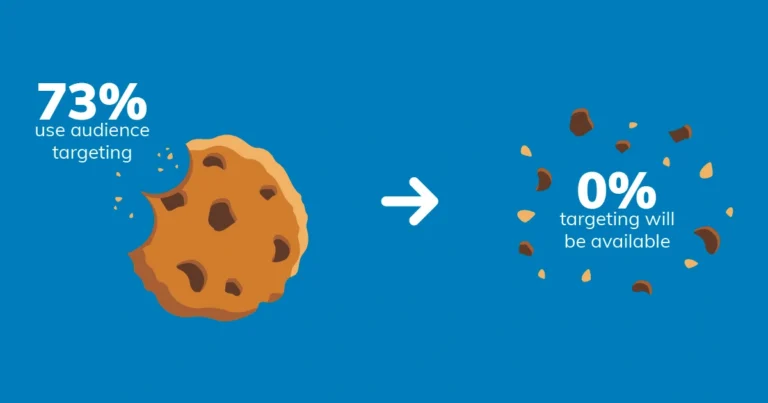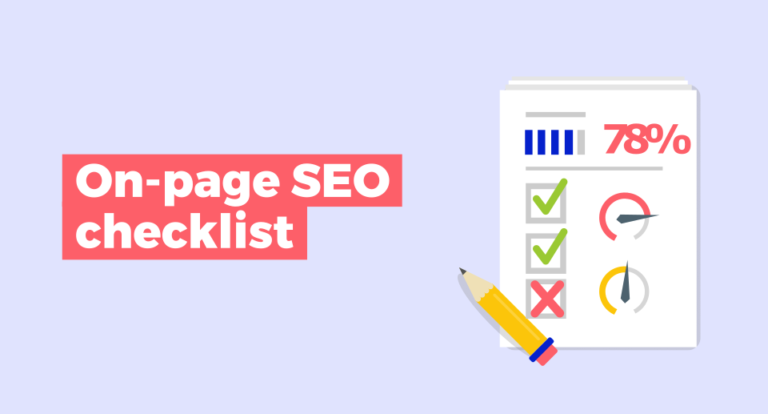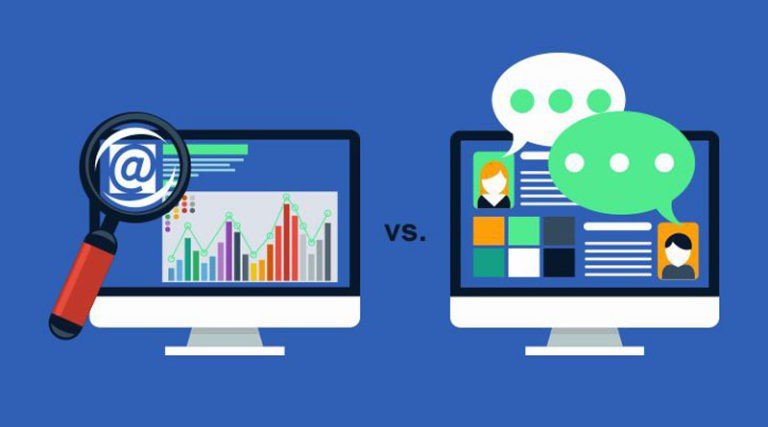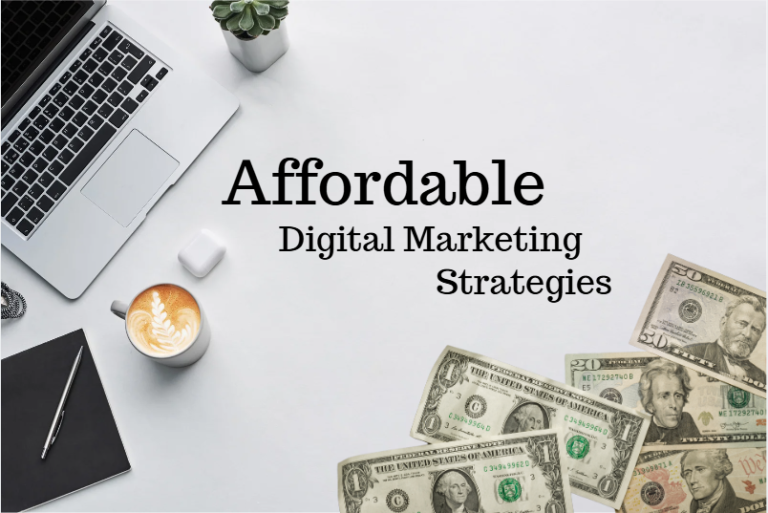Programmatic Advertising and Real-Time Bidding (RTB): The Future of Digital Ad Strategies in 2025
Understanding Programmatic Advertising and Real-Time Bidding (RTB)
Programmatic advertising and Real-Time Bidding (RTB) represent the cutting-edge of digital ad placement, offering brands a highly efficient way to reach target audiences. Powered by machine learning, programmatic advertising uses automation to streamline the ad-buying process, relying on algorithms and real-time data to decide where, when, and to whom ads are shown.
RTB takes programmatic advertising one step further by creating a competitive auction environment, allowing advertisers to bid on each impression in milliseconds, improving ad targeting and return on investment (ROI). As brands plan for 2025 and beyond, programmatic advertising and RTB will be central to efficient ad spending and increased audience engagement.
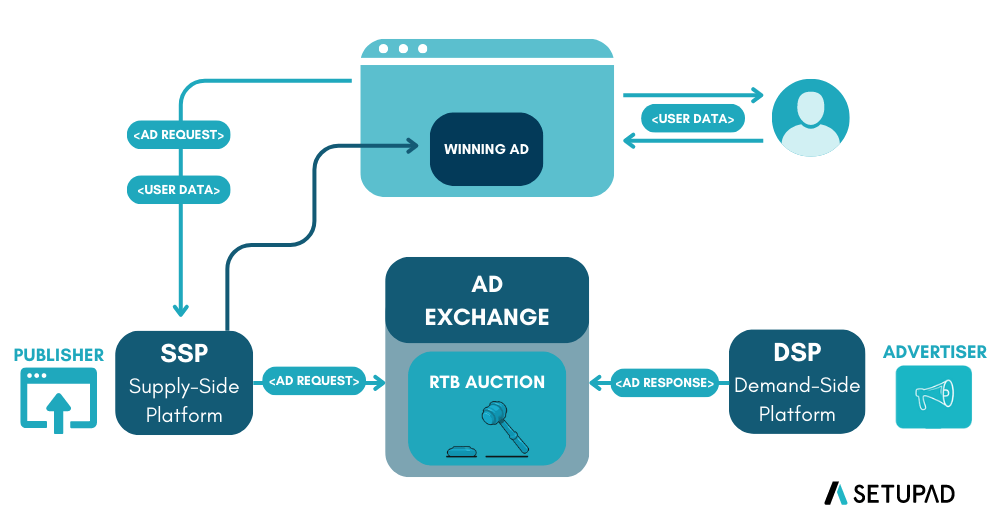
Introduction to Programmatic Advertising
What is Programmatic Advertising?
At its core, programmatic advertising is a method of using automated software to purchase digital advertising in real time. This process makes traditional methods of manual ad placement obsolete by letting algorithms decide which ads to show to which users at precisely the right time. Rather than negotiating ad placements with publishers, advertisers use programmatic technology to place ads instantly based on user data.
Evolution of Programmatic Advertising
Programmatic advertising began as a way to streamline digital ad buying, which was traditionally labor-intensive and time-consuming. The early 2000s saw the emergence of ad exchanges, where digital ad space was sold programmatically, allowing advertisers to reach larger audiences across multiple websites. Since then, programmatic technology has expanded to include social media platforms, mobile apps, and connected TV (CTV), making it a versatile tool for multi-channel ad campaigns. Programmatic advertising has grown more sophisticated over time, utilizing AI and machine learning to analyze data points and predict user behaviors, ensuring ads are shown to the most relevant audiences.
Why Programmatic is Dominating Digital Ad Strategies in 2025
The rise of programmatic advertising is largely driven by its ability to deliver highly targeted, data-driven ads that improve engagement and conversion rates. With programmatic solutions in place, advertisers can maximize their budgets, placing ads only where they are most likely to be effective. By 2025, this model is expected to dominate digital marketing as advertisers continue to prioritize efficiency and precision. The trend toward automation is unlikely to slow down, as machine learning algorithms continue to enhance the predictive power of programmatic advertising.
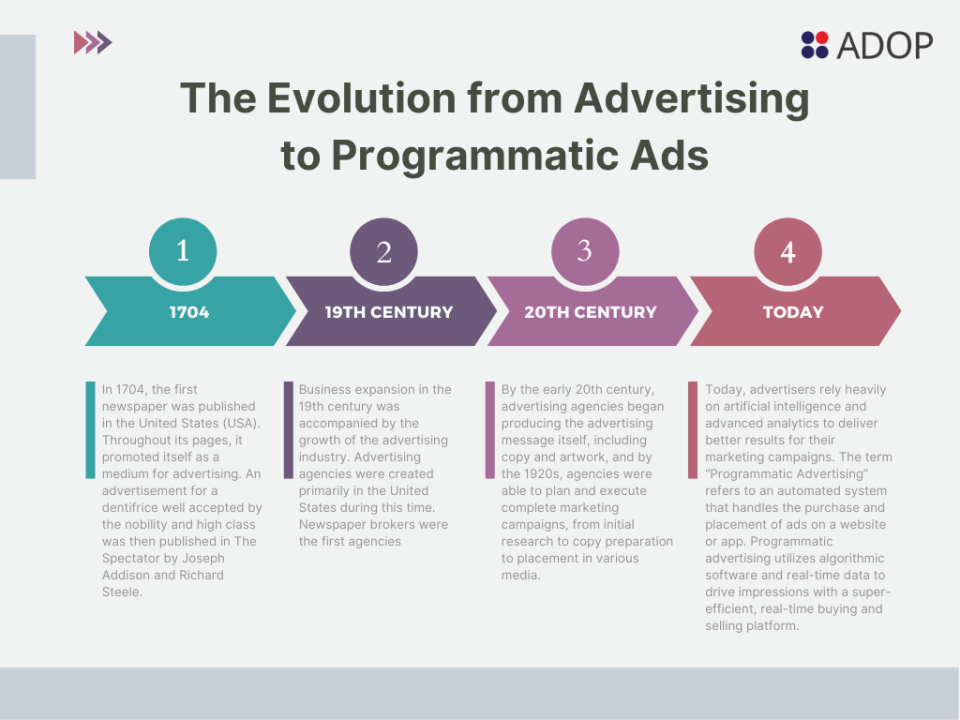
Key Components of Programmatic Advertising
Demand-Side Platforms (DSPs)
Demand-Side Platforms (DSPs) allow advertisers to purchase ad inventory across a variety of networks and publishers through a single interface. DSPs are crucial for programmatic advertising, automating the buying process while providing detailed analytics. These platforms give advertisers control over their targeting criteria and budget, making it easier to reach audiences on a large scale without micromanaging each publisher’s inventory. Popular DSPs include Google Ads, The Trade Desk, and MediaMath.
Supply-Side Platforms (SSPs)
On the other side, Supply-Side Platforms (SSPs) enable publishers to manage their ad inventory efficiently. SSPs work with DSPs to help publishers sell ad space in real-time, maximizing their revenue potential. Publishers use SSPs to connect with multiple advertisers simultaneously, giving them access to a larger pool of potential buyers. This setup benefits advertisers as well, ensuring they can reach their target audience at a fair price. By 2025, SSPs are expected to become even more advanced, offering publishers enhanced options for audience segmentation and targeting.
Data Management Platforms (DMPs)
Data Management Platforms (DMPs) play a pivotal role in programmatic advertising by organizing and analyzing data from various sources, such as website visits, social media interactions, and third-party data providers. DMPs help advertisers gain insights into audience behaviors, preferences, and demographics, which are critical for effective targeting. They also allow advertisers to create custom audience segments based on these insights, ensuring that ads reach the right users. DMPs often collaborate with both DSPs and SSPs to support seamless ad placement and targeting.
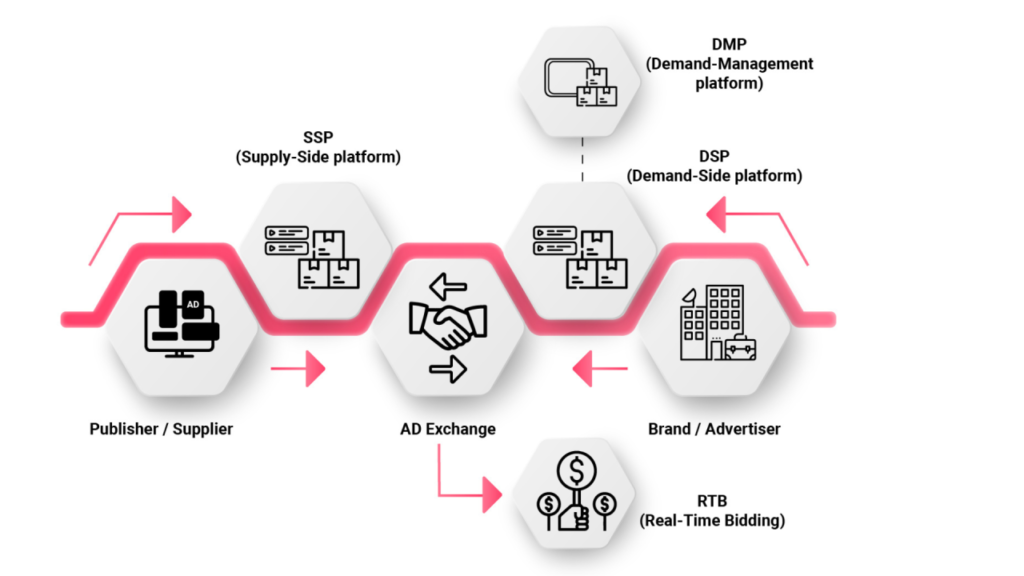
Introduction to Real-Time Bidding (RTB)
What is RTB?
Real-Time Bidding (RTB) is a type of programmatic advertising that uses an auction model to determine which ad is shown to a user. When a user visits a webpage, a bidding process takes place in milliseconds, with advertisers competing to display their ad based on data like user behavior, demographics, and browsing history. RTB allows advertisers to pay only for impressions that match their criteria, ensuring each ad placement is relevant to the viewer.
RTB Process Explained
The RTB process begins as soon as a user loads a page or opens an app. This action triggers a request for ad space, which is sent to an ad exchange. The ad exchange connects with DSPs, who then analyze the user data and determine an appropriate bid based on the user’s profile. The highest bid wins, and the ad is displayed instantly. This entire transaction happens in a matter of milliseconds, making RTB one of the fastest and most efficient ways to place ads.
Importance of RTB in Programmatic Advertising
RTB is integral to programmatic advertising because it ensures that advertisers pay only for impressions that are likely to engage their target audience. By optimizing bids in real time, RTB helps reduce ad spend wastage, leading to a higher ROI. RTB’s automation makes the process efficient and scalable, allowing brands to reach audiences across various digital channels without having to manage each ad placement manually.
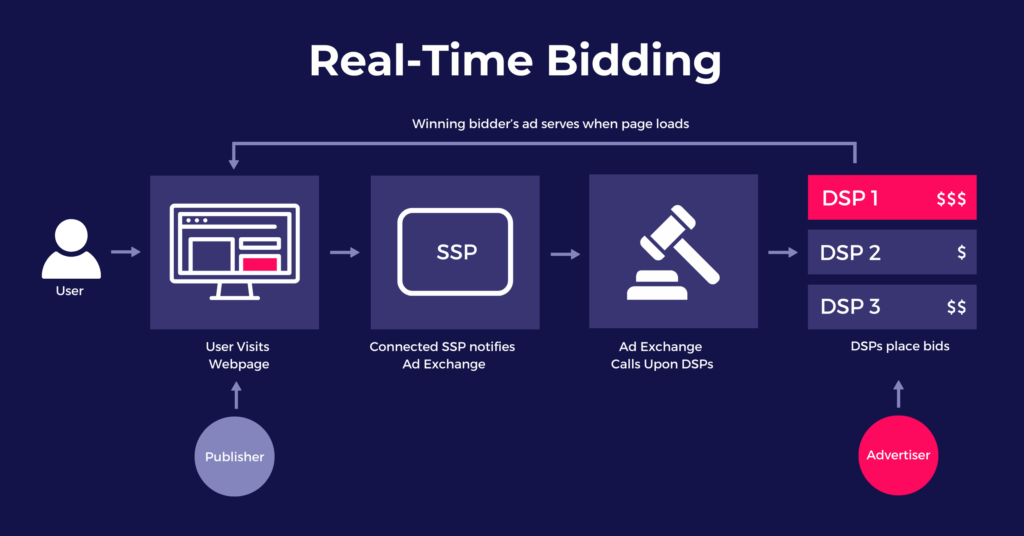
Machine Learning’s Role in Programmatic and RTB
Machine Learning Algorithms in Ad Networks
Machine learning is at the heart of modern ad networks, enabling DSPs and SSPs to optimize ad placements automatically. These algorithms learn from user interactions, browsing behaviors, and historical data to predict the likelihood of engagement. Machine learning also plays a role in creative optimization, ensuring that ad content is tailored to the audience for maximum impact. By 2025, machine learning will likely be essential to all major ad networks, allowing for a level of personalization that was previously unattainable.
Types of Algorithms Used
Several types of algorithms are used in programmatic advertising and RTB, including:
- Predictive Algorithms: These analyze historical data to forecast which users are most likely to engage with an ad.
- Recommendation Algorithms: These algorithms suggest specific ad content or placements based on a user’s past behaviors.
- Optimization Algorithms: These aim to maximize ad performance by adjusting bid amounts and ad placements dynamically.
How Machine Learning Improves ROI
Machine learning improves return on investment (ROI) by making ad placements more relevant to the viewer and reducing irrelevant impressions. By analyzing vast amounts of data, machine learning identifies user segments that are more likely to convert, which enhances the effectiveness of each ad placement. For advertisers, this translates to lower costs and higher engagement rates.

Key Benefits of Programmatic Advertising and RTB
Improved Targeting and Personalization
Programmatic advertising allows advertisers to reach highly specific audiences based on demographics, interests, and online behaviors. This precision targeting means ads are more relevant to viewers, resulting in higher engagement and conversion rates. Personalization features enable brands to tailor messages to each user, creating a better user experience and stronger brand loyalty.
Reduced Ad Spend Wastage
By focusing on high-value impressions, programmatic advertising reduces wasted ad spend significantly. Rather than paying for impressions that reach a broad, untargeted audience, advertisers use programmatic tools to ensure their ads are shown only to users who are likely to engage. This approach maximizes ROI and ensures that each ad dollar is spent wisely.
Enhanced Efficiency and Scale
Programmatic advertising automates the ad placement process, enabling campaigns to reach a global audience without requiring manual intervention. By 2025, programmatic advertising is expected to be a primary tool for advertisers looking to scale their campaigns across digital channels, from social media to streaming platforms and beyond.
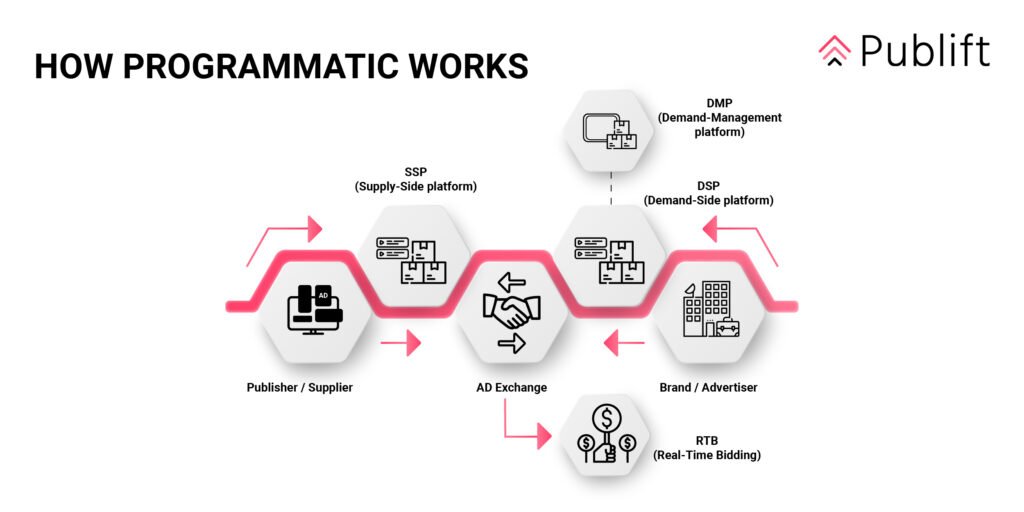
Types of Programmatic Advertising
Real-Time Bidding (RTB)
RTB uses an auction-based model to place ads in real time, where advertisers compete for each impression. This method ensures that ads reach relevant users, as advertisers pay for each impression only if it aligns with their targeting criteria.
Programmatic Direct
In Programmatic Direct, advertisers buy ad space directly from publishers at a fixed price. This model bypasses the auction process, making it ideal for brands looking for specific placements on premium sites. While less flexible than RTB, Programmatic Direct offers greater control over where ads appear.
Private Marketplaces (PMPs)
Private Marketplaces are exclusive ad exchanges where publishers invite select advertisers to bid on premium ad space. PMPs offer a semi-closed environment with more control over ad placements than open auctions, making them an ideal choice for brands seeking a balance between reach and exclusivity.
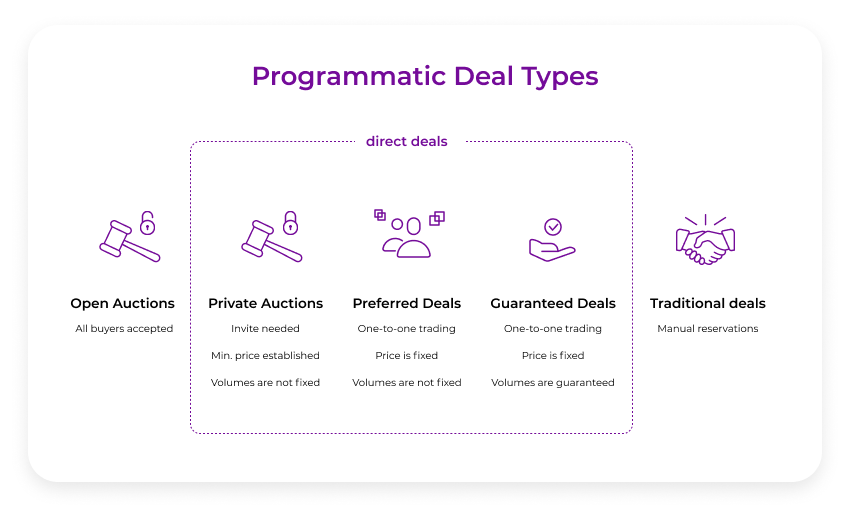
Actionable Strategies for Programmatic Advertising in 2025
Prioritizing Dynamic Ad Placements
Dynamic ad placements involve adjusting ads in real time based on the user’s context, such as location, time of day, and browsing history. With programmatic advertising, brands can prioritize these placements to ensure that ads appear at moments of high relevance. This strategy improves engagement by showing users personalized content that fits their current context. Advertisers can achieve dynamic ad placements by:
- Utilizing Data from DMPs: Leverage insights from DMPs to understand which times, locations, and channels perform best for different segments.
- Creating Responsive Ad Formats: Develop ad formats that adapt to different devices, screen sizes, and placements.
- Real-Time Personalization: Use machine learning to dynamically adjust ad content based on user behavior, increasing the likelihood of engagement.
Automating Bidding Strategies
One of the most powerful features of programmatic advertising is automated bidding. Automated bidding strategies optimize the bid amount for each impression based on expected engagement, improving efficiency and saving time. Machine learning algorithms continually analyze and adjust bidding strategies, ensuring that each ad dollar is spent effectively. Automation offers significant advantages:
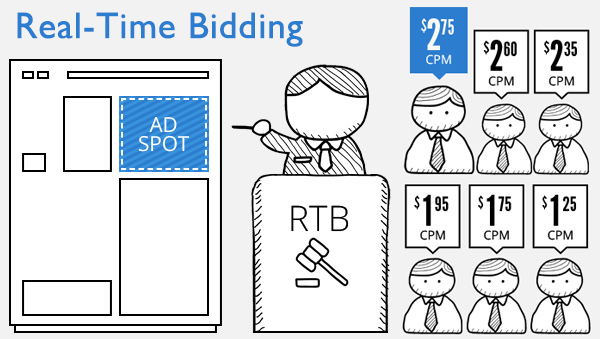
- Enhanced ROI: By targeting the right audiences at the best prices, automated bidding maximizes the effectiveness of each dollar spent.
- Time Efficiency: Automated bidding eliminates the need for manual adjustments, freeing up time for strategic planning.
- Improved Consistency: Bids are automatically adjusted to fit budget and campaign goals, maintaining consistency across placements.
Focusing on High-Value Audiences
Instead of casting a wide net, programmatic advertising enables advertisers to zero in on high-value audiences who are more likely to convert. By targeting these specific audiences, brands can improve ad relevance and campaign effectiveness. This strategy can involve:
- Segmenting by Purchase Behavior: Analyze purchase patterns to identify repeat customers or high-spending segments.
- Using Retargeting Techniques: Retargeting focuses on users who have already engaged with your brand, making it easier to convert them into loyal customers.
- Leveraging Lookalike Audiences: DSPs often allow you to create lookalike audiences based on existing customers, reaching users with similar characteristics.
Future Trends in Programmatic Advertising and RTB
Increased Focus on Machine Learning and AI
As machine learning and AI evolve, they will play an increasingly significant role in programmatic advertising and RTB. New algorithms and predictive analytics will allow advertisers to anticipate user needs more accurately, further enhancing ad relevance. Key trends include:
- Enhanced Predictive Capabilities: Algorithms that predict not only user behavior but also the type of content they’re most likely to engage with.
- Natural Language Processing (NLP): NLP will enable better contextual targeting by understanding the meaning behind webpage content, ensuring ads are relevant to the user’s interests.
- Creative Optimization: AI-driven creative optimization will make it possible to generate personalized ad content dynamically, based on real-time insights.
Growth of Connected TV (CTV) and Digital Out-of-Home (DOOH)
Programmatic advertising is expanding into new channels, including Connected TV (CTV) and Digital Out-of-Home (DOOH) advertising. CTV allows advertisers to reach audiences on streaming platforms like Hulu or Roku, while DOOH offers opportunities to engage consumers with digital billboards and signage. These emerging channels are set to play a major role in the programmatic landscape by 2025:
- CTV Benefits: With audiences shifting from traditional TV to streaming platforms, CTV offers a data-rich environment for targeted ads.
- DOOH Flexibility: DOOH enables advertisers to deliver personalized messages based on location, time of day, and nearby events, providing a unique and dynamic ad experience.
Impact of 5G on Real-Time Bidding and Programmatic
With the expansion of 5G technology, programmatic advertising and RTB are poised to become even more efficient. 5G’s faster data speeds and lower latency will enable real-time data processing, making it possible to deliver highly responsive ad experiences. Benefits of 5G for programmatic advertising include:
- Instantaneous Data Processing: Faster speeds mean more data can be processed in real-time, enabling even more precise ad targeting.
- Enhanced Mobile Advertising: With mobile browsing speeds improved, advertisers can create richer ad experiences tailored to mobile devices.
- Increased Responsiveness: Reduced latency enhances the accuracy of RTB, ensuring that ads are delivered exactly when and where they are most relevant.
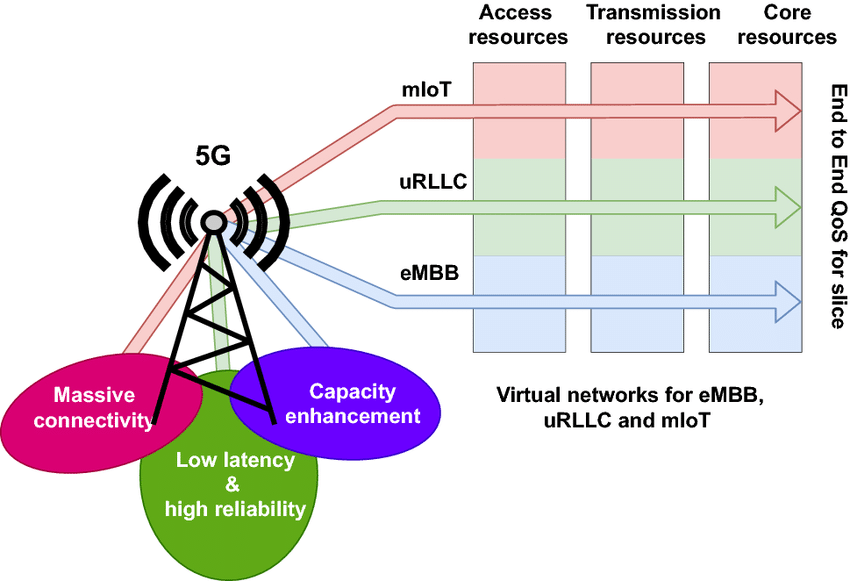
Industry Use Cases for Programmatic Advertising and RTB
E-commerce and Retail
E-commerce brands leverage programmatic advertising to boost sales by reaching potential customers across various channels. RTB enables retailers to bid for ad space on high-traffic websites, reaching users who show interest in specific products. Key tactics in e-commerce programmatic advertising include:
- Product Retargeting: Showing ads to users who have previously visited product pages, reminding them of items they viewed but didn’t purchase.
- Seasonal Campaigns: Running targeted campaigns around holidays and sales events, when purchase intent is high.
- Cart Abandonment Ads: Re-engaging users who left items in their cart without completing a purchase.
Travel and Hospitality
The travel and hospitality sectors utilize RTB to reach travelers based on location and season. Programmatic advertising helps these businesses reach a broad yet targeted audience, increasing bookings and engagement:
- Geo-Targeting for Local Attractions: Target ads to users based on location, promoting local experiences and travel packages.
- Targeting Seasonal Travelers: Use data to identify travelers planning trips for specific times, offering relevant packages.
- Loyalty Program Ads: Retarget frequent customers with loyalty rewards, increasing brand engagement and customer retention.
Automotive and Finance Sectors
Both the automotive and finance sectors benefit from programmatic advertising by using data to target audiences with higher potential for engagement:
- Automotive: Use programmatic ads to reach in-market consumers looking for new vehicles or parts, targeting them with specific offers or features.
- Finance: Programmatic ads can reach potential clients for services like loans or credit cards, focusing on demographic and behavioral data to appeal to high-value customers.
Conclusion: Maximizing Impact with Programmatic Advertising and RTB in 2025
As programmatic advertising and RTB continue to evolve, their importance to digital marketing will only grow. By focusing on dynamic ad placements, automated bidding, and high-value audience targeting, brands can maximize their impact in 2025. Machine learning and AI will enhance these capabilities, offering new ways to personalize and optimize ads in real time. For advertisers, staying ahead means prioritizing programmatic ad solutions that integrate real-time data, machine learning, and multi-channel strategies, ensuring their message reaches the right audience efficiently and effectively.
Frequently Asked Questions (FAQ) about Programmatic Advertising and Real-Time Bidding (RTB)
Disclosure: Our blog contains affiliate links to products. We may receive a commission for purchases made through these links. However, this does not impact our reviews and comparisons. We try our best to keep things fair and balanced, in order to help you make the best choice for you.


